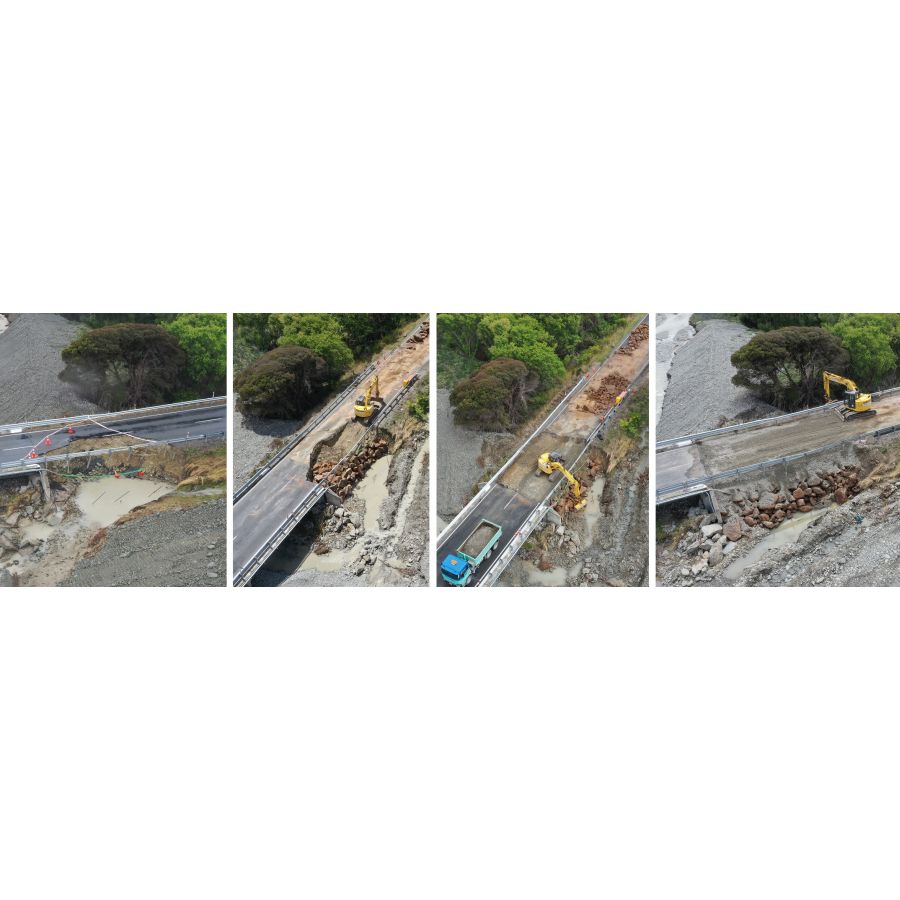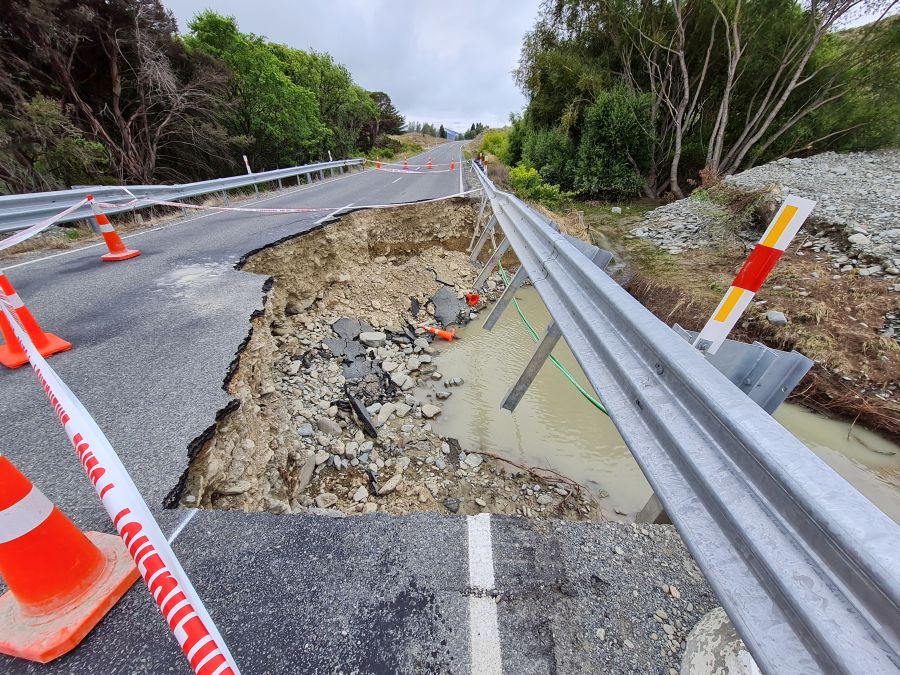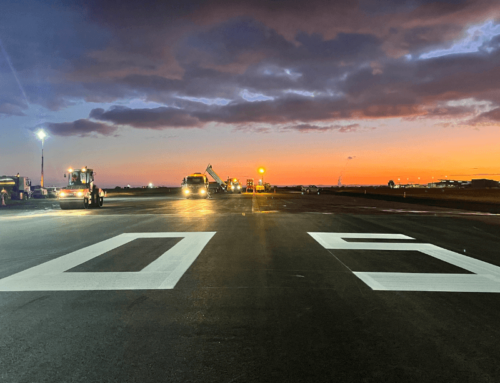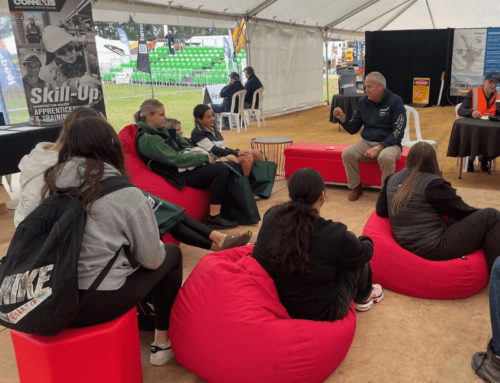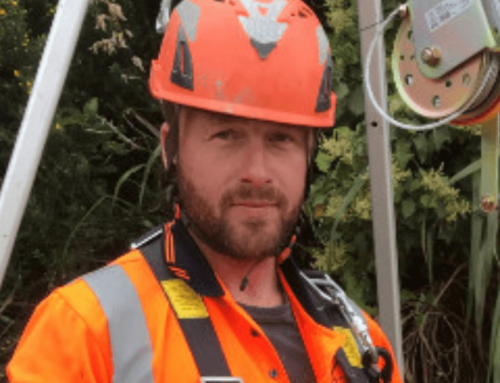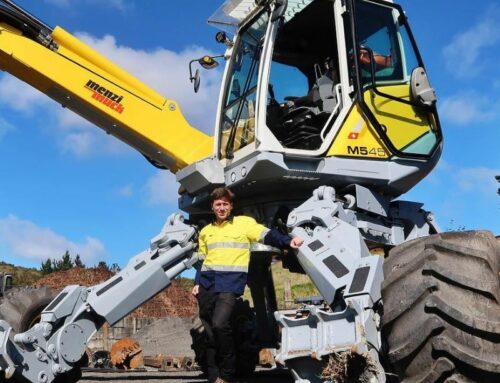The fifth round of the EPIC Photo Competition – themed EPIC Outcomes – was won by Damien McNamara of SouthRoads in Oamaru.
Damien documented the restoration of State Highway 83 between 5 and 8 January following a flooding episode that washed away one end of the Parsons Creek Bridge and rendered the main route between Oamaru and Omarama impassable.
The central South Island towns of Otematata and Omarama are small, each with a population numbering in the hundreds. But over the summer holidays, the populations of these towns rise by thousands as holidaymakers take to the campgrounds and rivers across the area.
The damage to the road at the bridge caused a logistical nightmare heading east and west on the highway, preventing these holidaymakers from travelling, and leading to chaos on the alternate route.
Damien is a field technician and was one of the first on-site to help bridge the gap and reconnect the region to the rest of the country as fast as possible, by ensuring all services were located before work commenced.
“That’s the main route from Oamaru to Omarama, otherwise you have to go all the way up to Tekapo. The other route was out too across the Waitaki Bridges. It was our biggest priority to get the road opened by the following weekend, when everyone had to head home again.”
Damien’s career with SouthRoads started around eight years ago, and his job took him across Otago roads, tending to road signs, edging and other general maintenance work. He was also passionate about drones, previously running a small business as a drone operator.
When SouthRoads discovered they had a skilled drone operator on the team, they offered him a role as a field technician and supported him to start the process of becoming certified as a professional drone pilot, able to fly safely under the law in restricted areas such as around state highways.
Seven months later, Damien conducts aerial surveys to calculate the work required for jobs, also supporting the company’s machine operators with location of underground services such as power, water and phone lines. His toolkit doesn’t just consist of a drone he also has a ground penetrating radar (GPR) unit, EMF locator, and his ute has an inverter setup to charge everything, meaning he drives his own office and can work fully mobile.
His daily work could involve travelling through some of the South Island’s most beautiful spots to investigate ground movement on a work site, check the rate of coastal erosion or scan stock piles of aggregate and earth to provide an accurate volume.
He says the company’s excavator operators ‘have him on speed dial’, ringing when they need information so he can put through requests around locating underground services with beforeUdig, which it’s now possible to get to the guys on the ground within half an hour thanks to technology as every worker has a tablet and work email address, making information sharing a breeze.
“I’m loving the job, it’s great fun. The service location side of things has been a big learning curve, as well as learning to fully understand the gear we’re using. A water pipe can be a blip on the screen, but when you’re working on it all the time, you start to really understand the different blips and readings.”
Second prize in this round of the EPIC Photo Competition went to Rob North from Rock Control in Canterbury for his photograph of the installation of rock anchors at the end of a night shift on the final project of the $1.2b Kaikoura State Highway rebuild to restore transport infrastructure following the 2016 earthquakes.
Third prize went to Russell Green of Civil & Landfill Construction, contracting for Fulton Hogan on Puketutu Island in Auckland, which was quarried in the 1950s to provide materials for the construction of Auckland airport.
His photo showed an action shot of the team working on a pilot hole for the first of two horizontal directional drill shots, with the initial installation of a polyethylene gravity line which will carry leachate as part of a project to rehabilitate the island’s ecosystem by filling the former quarry with treated biosolids from the Mangere Wastewater Treatment Plant.
Some impressive technology was used to make the project possible, with an overland cable run directly over top of the drilling path to create a magnetic field.
The drill head also emitted its own magnetic field which bounced off the cable to provide location and positioning of the pilot hole. This allowed the Fulton Hogan team to steer the drill directly through a 1100mm gap 245m away, within the reinforcing of secant piles used for ground stabilization prior to excavation.
At the end of the Puketutu Island project in 2049, four small hills will be created to replicate the scoria cones that were quarried in the 1950s.
Damien won a die-cast model of some of the amazing technology used to construct and maintain NZ’s infrastructure from TransDiesel, a $300 fuel voucher from Z Energy and his story will be featured in Contractor Magazine. Rob won a $100 fuel voucher from Z Energy, and Russell won a $50 fuel voucher from Z Energy.
This was the fifth and final round of EPIC Photo Competition, which is a partnership between EPIC and Contractor Magazine. Voting will open for a People’s Choice award in early May before the next set of competition entry rounds begin. Keep an eye on the EPIC Photo Competition webpage or watch EPIC on Facebook or LinkedIn for updates.
Damien’s winning entry, which showed repairs to the Parsons Creek Bridge were carried out swiftly, connecting communities and enabling holidaymakers to get on the road

Second prize – Steve drilling holes for active mesh anchors during a night closure near Kaikoura – Rob North, Rock Control
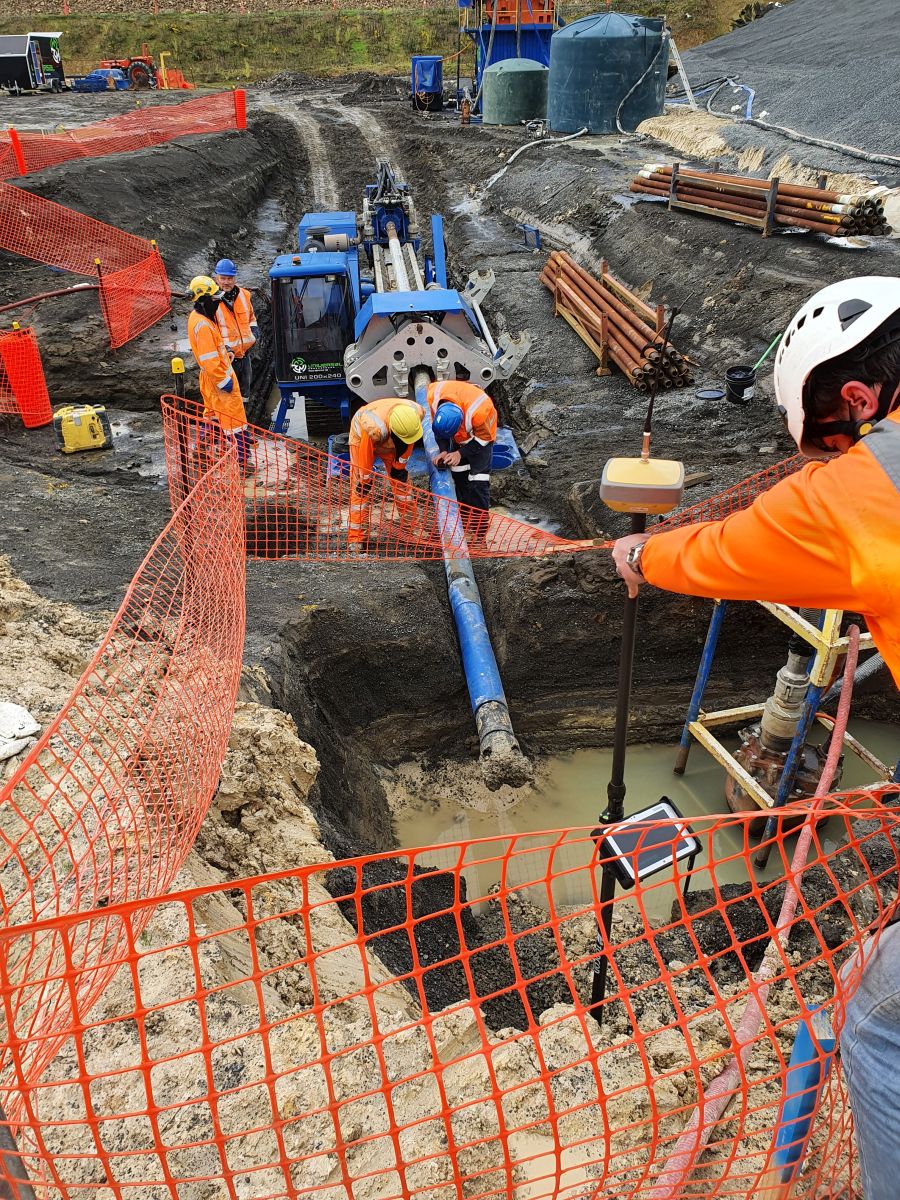
Third prize – Installation of a PE line at Puketutu Island – Russell Green, Civil & Landfill Construction contracting for Fulton Hogan

